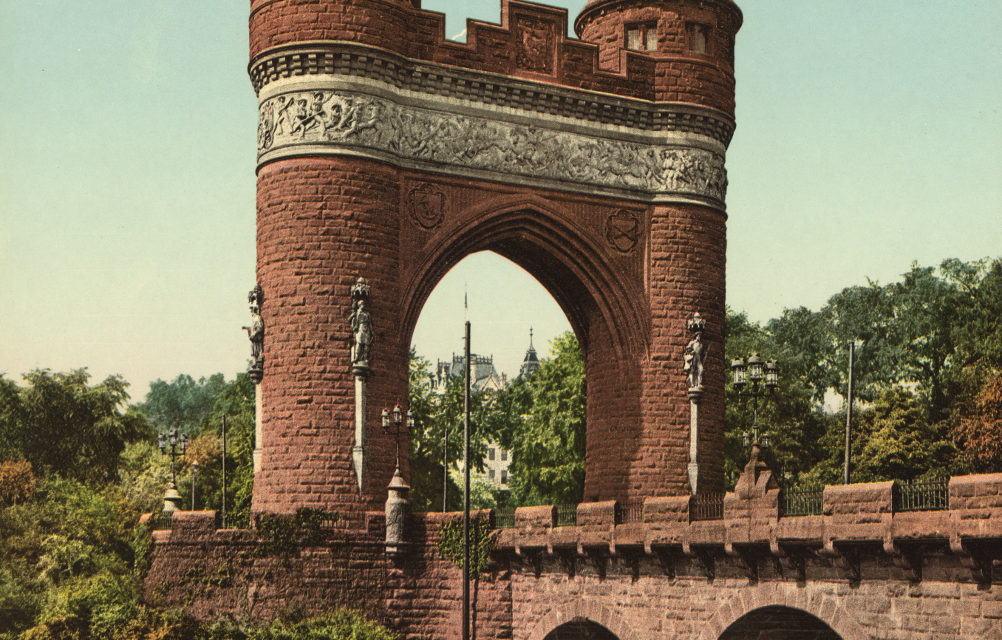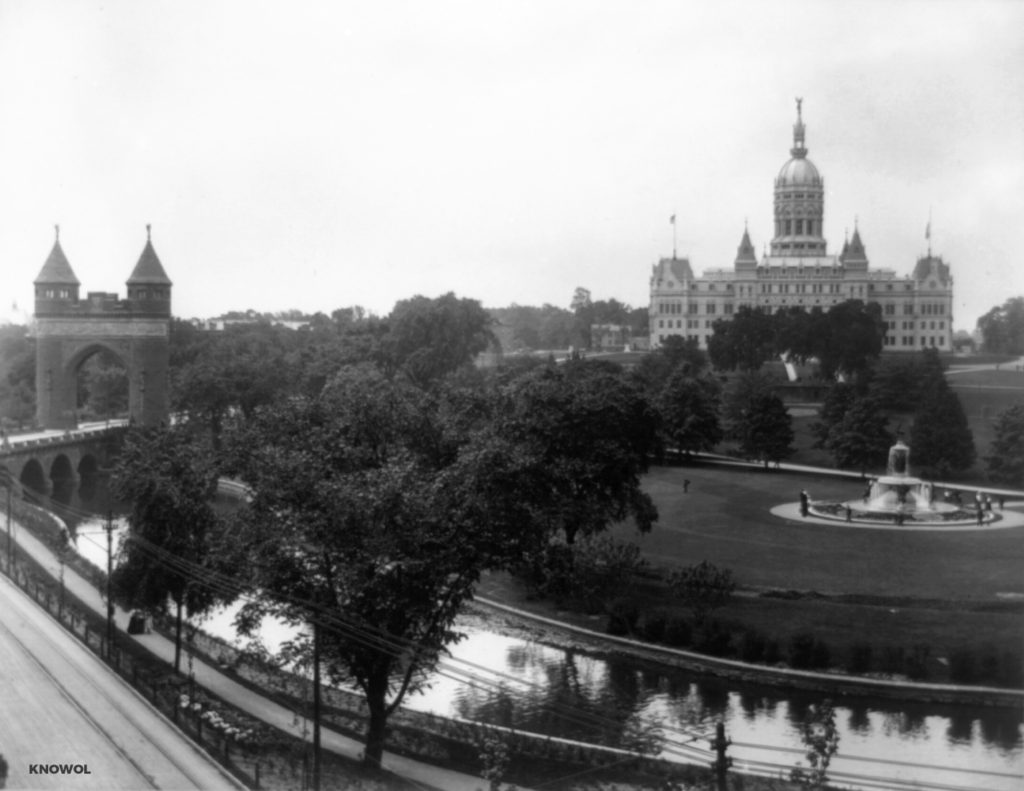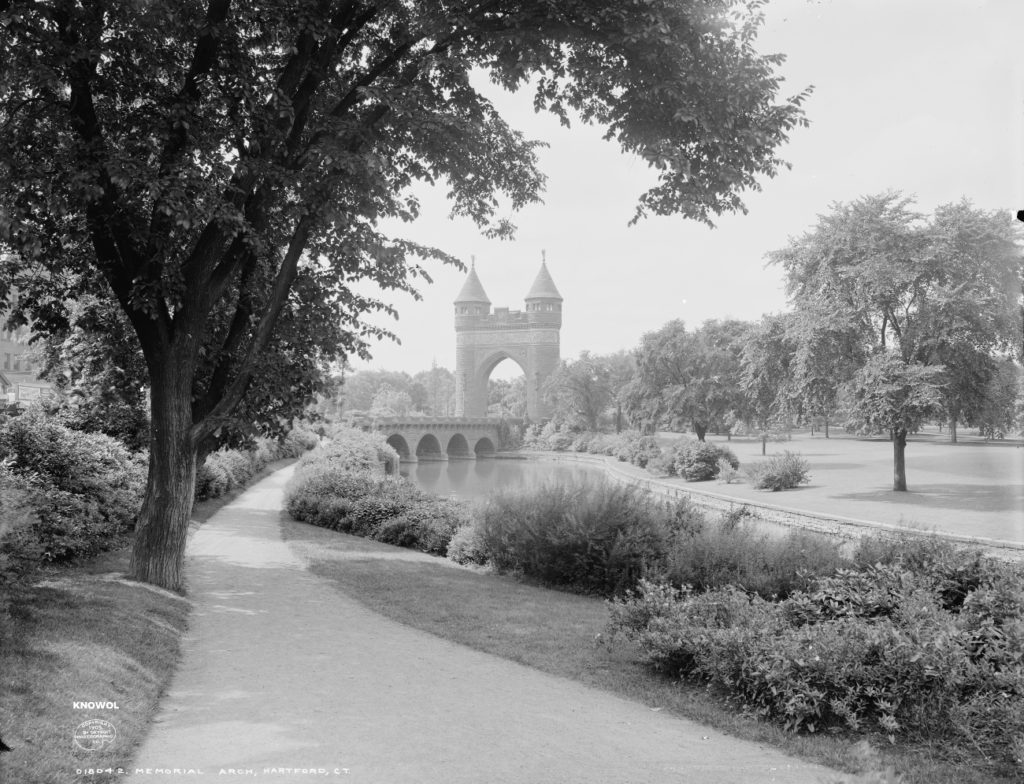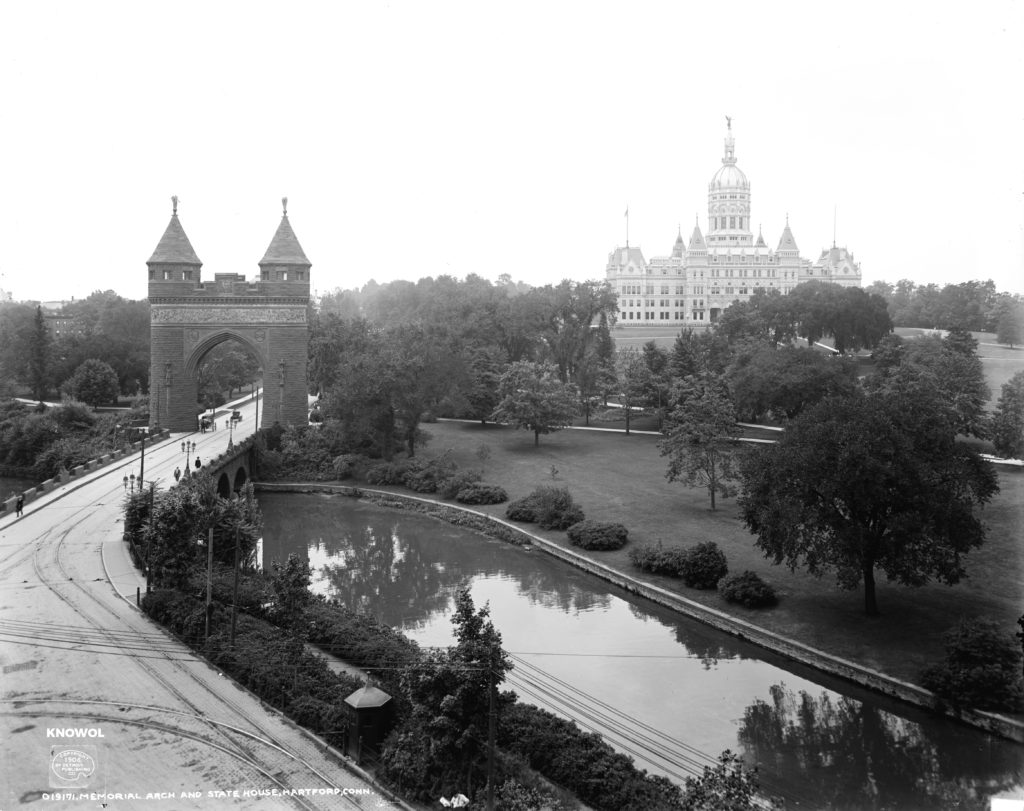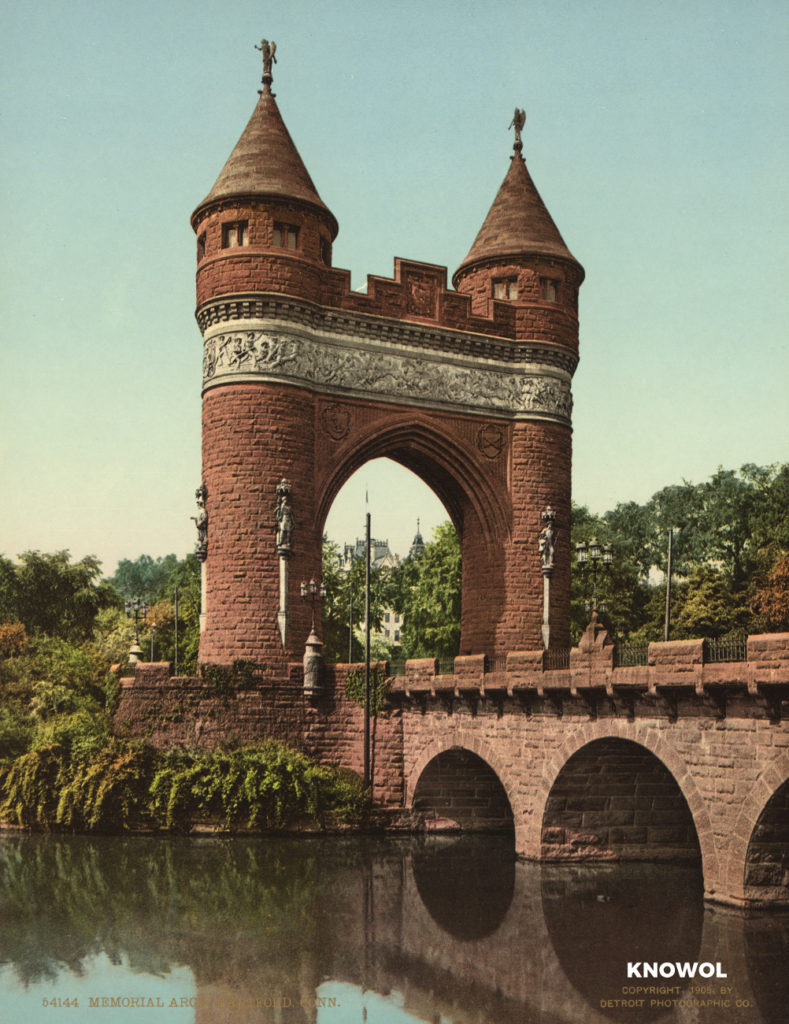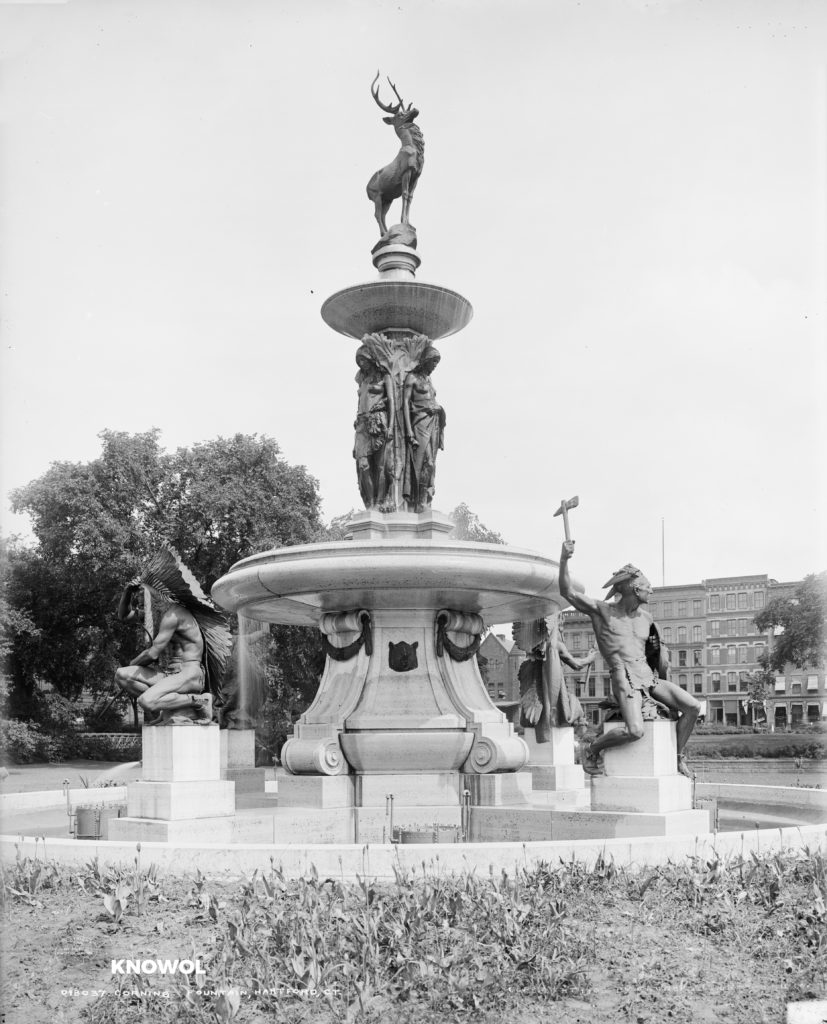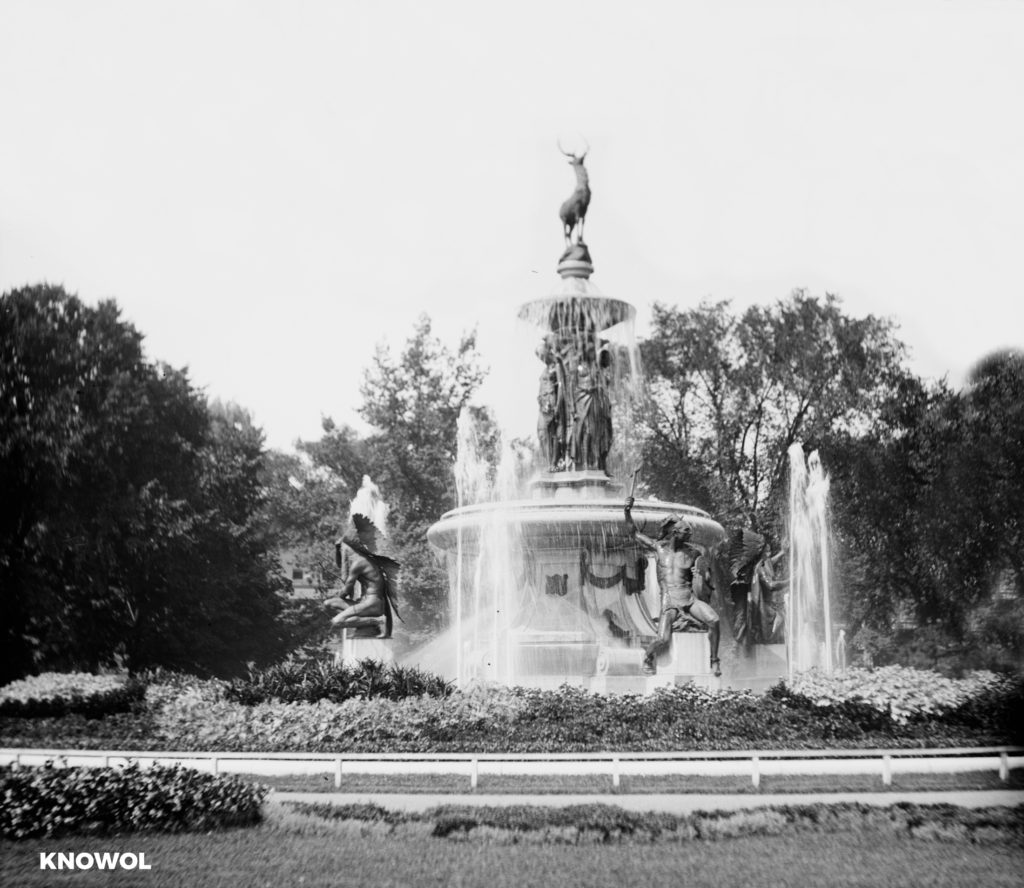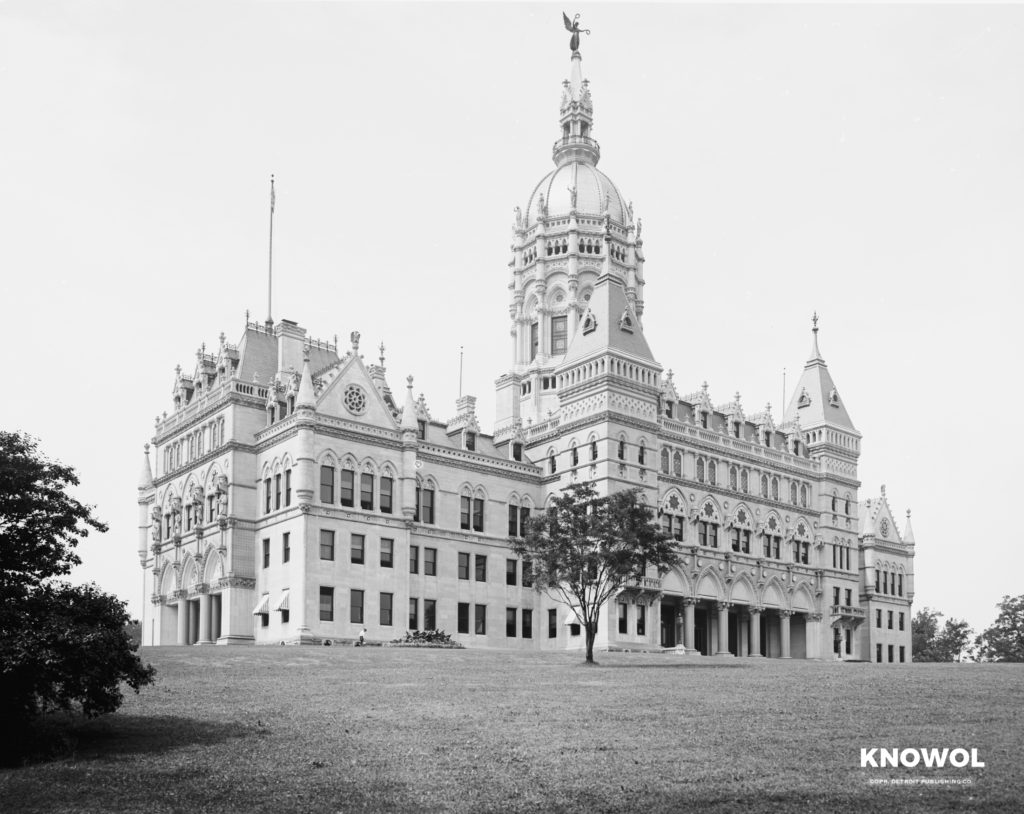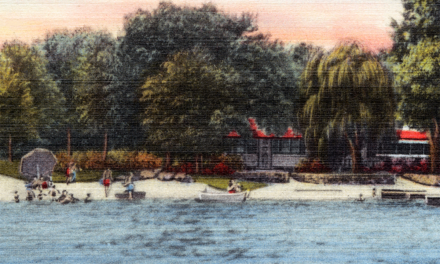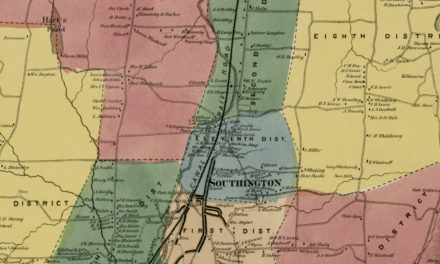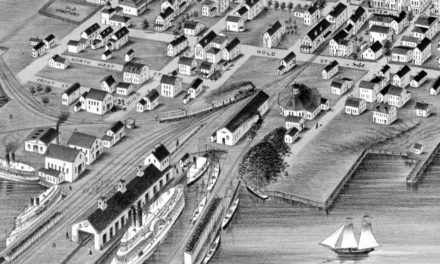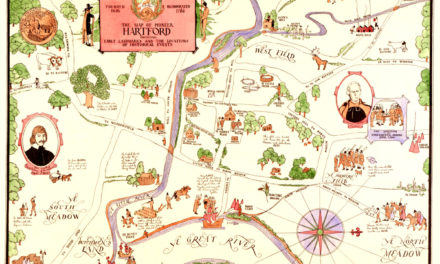These pictures of Hartford, Connecticut were taken over the span of 20 years, from 1900 -1920. The pictures show the Capitol Building, Memorial Arch and Bushnell Park as they looked at the turn of the 20th century.
State Capitol, Memorial Arch and Bushnell Park
Bushnell Park in Hartford, CT as it looked in 1900.
Bushnell Park is the oldest publicly funded park in the United States. The Reverend Horace Bushnell conceived the idea for the park in the 1850s at a time when the need for conserving open public spaces was just starting to be recognized. Today the park consists of 50 acres of green space, and has more than one million visitors per year.
Memorial Arch, Hartford, CT
The Soldiers and Sailors Memorial Arch is a memorial to the American Civil War located in Hartford, Connecticut. It was the first permanent triumphal arch in America, and honors the 4,000 Hartford citizens who served in the war, and the 400 who died. This picture shows the arch as it looked in 1905.
Memorial Arch and State House, Hartford, CT
Picture shows Hartford’s Memorial Arch in 1906.
The Memorial Arch is made of brownstone from a quarry in Portland, CT and was built in the Gothic Revival style. The arch is composed of two medieval towers joined by a classical frieze.
The north frieze tells a story of the war, with General Ulysses S. Grant looking over his troops on the right and marines jumping from a boat to rush the Confederates on the left. The south frieze tells the story of peace, with a central female allegorical figure representing the City of Hartford, surrounded by her citizens welcoming soldiers home.
Memorial Arch, Hartford, CT
The tower statues was completed in 1894 Swiss-born sculptor Albert Entress (1846-1926). When the arch was rehabilitated in 1986–1988, its original terra cotta finial angels were replaced by the current bronze angels. This picture shows the arch as it looked in 1905.
Corning Fountain, Hartford, CT
Corning Fountain is a sculpture fountain located in Bushnell Park, Hartford, CT. This picture shows the fountain as it looked in 1905.
The fountain was dedicated in 1899 after being gifted to the city by John J. Corning in memory of his father, John Benton Corning (1811–1896), a Hartford businessman who operated a grist mill on the site.
The fountain stands 28 feet tall, is made of bronze and granite, and features stylized Saukiog and Oneida Indians. Atop the statue stands the figure of a stag, Hartford’s emblem.
Corning Fountain, Hartford, CT
This photograph of the fountain was taken between 1918 and 1920. The grounds were developed and landscaped, as you can tell by comparing the ground in the 1905 picture.
The fountain features four bronze Saukiog Indians around the lower basin, a center pedestal surrounded by four bronze Oneida maidens, and an upper basin topped by a bronze stag. The Saukiog Indians are: (west side) holding a spear; (south side) wearing a feathered headdress and scanning the horizon; (east side) raising a tomahawk; (north side) holding a peacepipe and lifting his hand in a gesture of peace.
Below the upper basin are four animal head water spouts (a catamount, a bear, a fox, and a beaver). Below the lower basin are four lion heads, which are also water spouts. Water flows over the edges of each tier and into a large concrete basin at the base of the fountain.
State House, Hartford, CT
The Connecticut State Capitol is located north of Capitol Avenue and south of Bushnell Park in Hartford, the capital of Connecticut. The above picture of the building was taken in 1906.
The building houses the Connecticut General Assembly; consisting of the State Senate, the House of Representatives, and the office of the Governor of the State of Connecticut.
The building’s dome originally had a large statue on top of it,called “The Genius of Connecticut“. The statue was cast in bronze, stood 17.833 ft tall, and weighed 7,000 lbs. It was created in Rome, Italy and cast in Munich, Germany. The statue was taken down in 1938 after being damaged in the 1938 New England Hurricane.
During World War II, the piece was donated to the federal government and melted down as part of the war effort to make ammunition and machine parts. The original plaster statue is now at the capitol, coated in bronze.
In 2002, the General Assembly sought authorization to make a new casting of the statue to restore the design for the capitol dome. The bill passed in 2009, and a new bronze cast was made, but it has not yet been mounted on the dome, as the city needs an additional $200,000 in funding.

